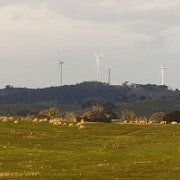Watt's up with wind in SA?
At WattClarity we've noted a bit of discussion about wind power supplying over half of South Australia's demand on Thursday last week. Given interest in this topic, we thought it would be of value to put yesterday's production in the context of what's been happening over the past 6 months or so.
We used NEM-Review to produce the following trend of the output of both demand in SA and the aggregate output from all the wind farms in South Australia. 
For completeness we also included the price range of SA spot prices on each of these days, as well.
From this chart we can make a number of observations, including the following:
1) We can see the wind production yesterday was indeed high – and that these high levels of production seem to occur every week or so, on average. In between these spikes in wind production are times of very low production (previously discussed here and here, etc…).
2) Because demand has been tapering off in SA in the past couple weeks (on the tail end of winter) we see that the percentage supplied (from the same peak volume) is higher now.
3) We can see that the production of wind is somewhat reverse-correlated with demand in SA – as is also shown in the correlation below.

4) We also see the reverse correlation between wind production and price (i.e. higher production from wind puts downward pressure on prices in SA – sometimes to the cost of the wind farm operators (or PPA holders) who have to pay back to AEMO whenever prices drop below zero overnight.
(a) In the chart above, we've capped the axis range from $300/MWh to –$300/MWh in order that the scale of the numbers can be seen better, but keep in mind that daily peak prices rose over $4000/MWh and dropped to almost –$1000/MWh
(b) This is easy to understand, as the wind is dispatched with zero marginal cost and hence squeezes out the more thermal plant, which has a higher short-run marginal cost (and hence bid price).
(c) This reverse correlation can also been seen in the chart below, over the same date range.

Paul McArdle is the Managing Director of Global-Roam Pty Ltd, a business that provides computer software that helps users to analyse and understand energy markets
This article was originally published on WattClarity. Republished with permission.













